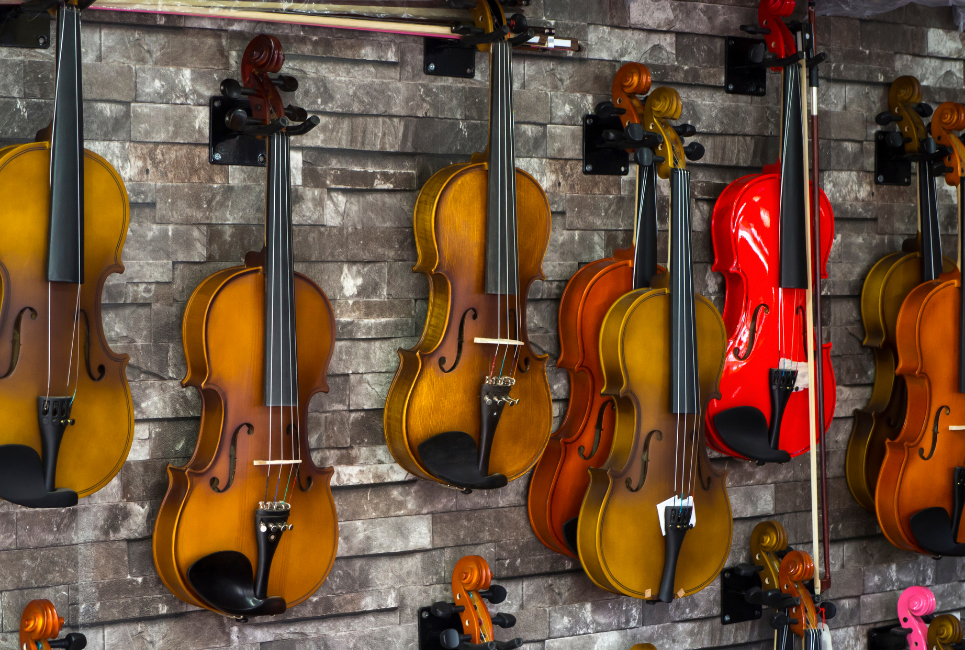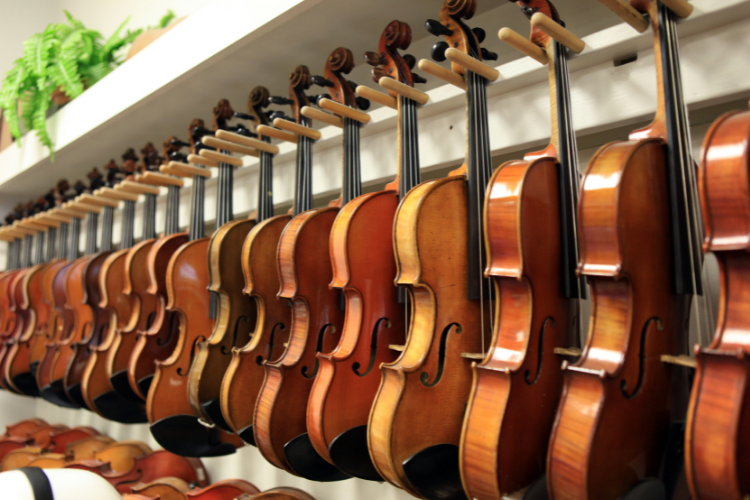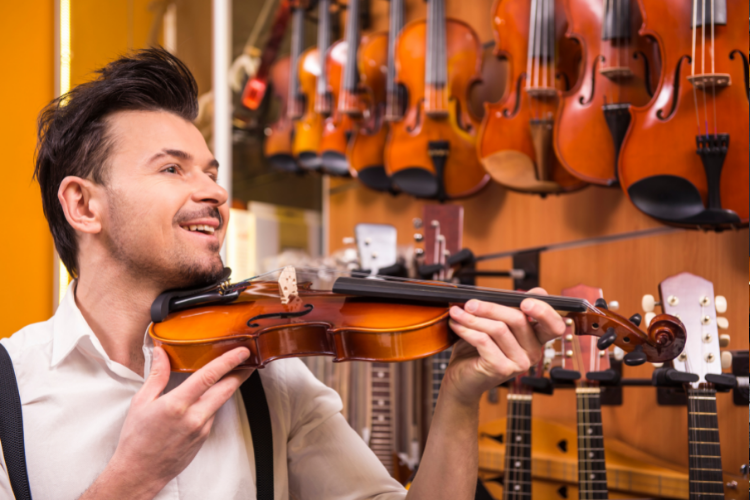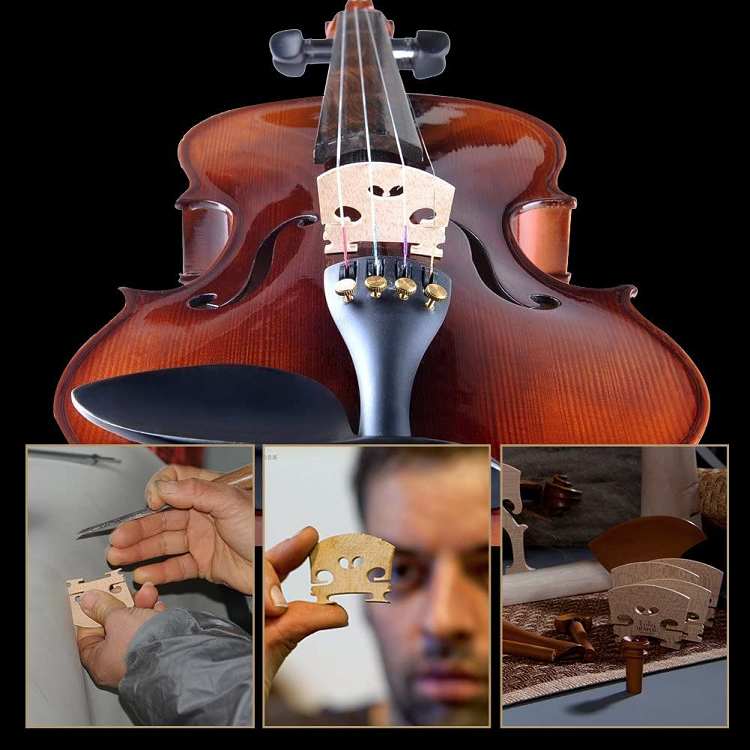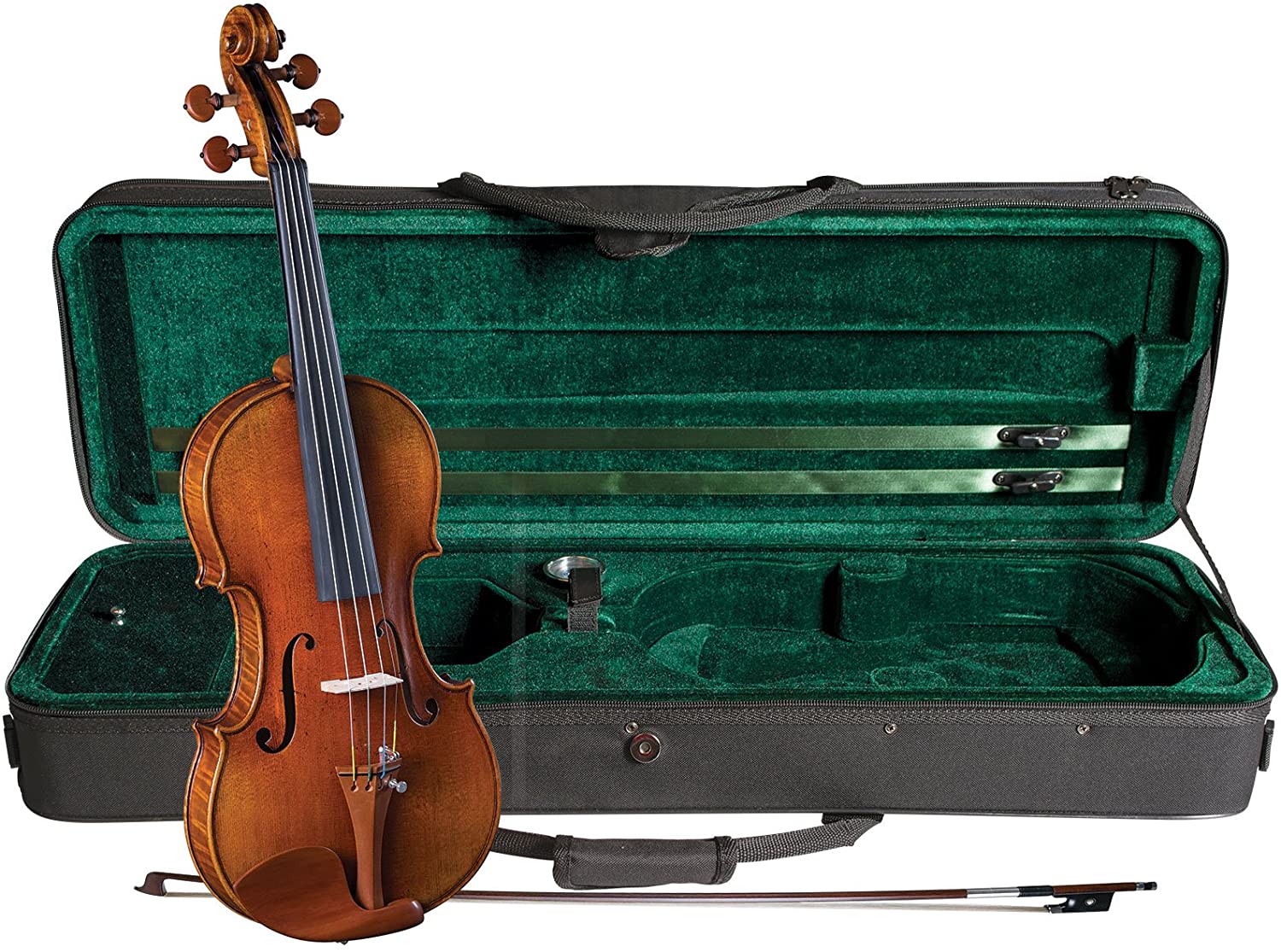- How to Find the Best 5 String Violins - April 19, 2022
- Top Violin Accessories to Consider - April 18, 2022
- Best Left-Handed Violins Guide - April 13, 2022
Summary: With this violin prices guide, you will get a better understanding of what violin prices are for different musical skills and what you can expect in terms of quality, craftsmanship, and accessories in each category.
It is always good to know how to find the best violin for your skill, age, and budget. But knowing what violins should cost can help you tell if what you are about to spend is correct. This violin prices guide will explain the general price ranges, what you can expect in each, and when it is the right choice for you.
Bottomline Up Front
The bottom line is that choosing a violin should be based on your budget. As you improve your musical skill and go from beginner to intermediate to advanced, you can expect to pay more money for your violin.
Still, this violin prices guide showed you that there are different price ranges with violins suitable for varying musical skill levels.
Selection Criteria
I divided my selection based on their price range for this violin prices guide. The price ranges are determined by manufacturing standards, materials, quality of craftsmanship, and who they are designed for. I included one example for each category that represents a middle-of-the-road, popular example for consumers.
What Size Violin Do I Need?
Knowing what size violin you need will help you as you go through this violin prices guide. One time, I typed in ‘cheap violins’ for my son. He had just decided to take up the violin, and I needed something affordable. As a single mom, reasonable had a different connotation for me than for other parents at his school.
I saw the price at only $80 and was very excited, but I did not realize at first that the particular manufacturer I was viewing had eight different sizes, and the page had opened to the cheapest one, which was their smallest size. Seeing as he was in Middle School, the model intended for a five-year-old wasn’t going to work.
Instead of just typing in “cheap violin” or asking for the cheapest violin at a music shop, you can ask for the most inexpensive ¾ violin or cheapest ½ violin. For this reason, you must know what size to look for and refine your search based on those parameters. The table below explains:
Different violin sizes are based on the measurement of the violin. So, you can measure your arm span from wrist to shoulder and determine whether the violin would fit in that space comfortably with your elbow slightly bent. You can watch this video how on to take good measurements if you are unsure:
| Size Violin | Who should use this size? | Measurements for arm length |
| 4/4 or “full size” | Anyone 11 through adult | 23.5 inches or longer |
| 3/4 | Children 10-11 | Between 22 inches and 23.5 inches |
| 1/2 or “half size” | Children 8-10 | Between 20 inches and 22 inches |
| 1/4 | Children 6-7 | Between 17.6 inches and 20 inches |
| 1/8 or “mini” | Children 5 years old | Between 17.1 and 17.5 inches |
| 1/10 or “mini” | Children 4 years old | Between 15 ⅜ inches and 17 inches |
| 1/16 or “toy violins” | Children 2-3 years old | Between 14 inches and 15 ⅜ inches |
Violin Prices Guide: $200-$1000
Best for: Beginners and Intermediates
Let’s start with the beginner range. At the bottom end of the spectrum, you will find some of the cheapest violins, usually factory-made in China. They are well-made, but you do not get any adjustments, and you might need a professional to set everything up and tune it.
Here is where you typically get all of your beginner accessories like a standard hard case, a remedial bow, maybe even some rosin, and a cleaning cloth.
These accessories are great for beginners because brand new musicians do not need to invest heavily in Pernambuco violin bows or top-of-the-line synthetic strings because they do not have the skillset to make the most out of such refined accessories and materials can offer.
As you move through this range beyond the $500 mark, you start to see a higher grade of timber, and you begin to see handcrafted violins. Handcrafted means an individual puts all the pieces together, which guarantees better quality control.
This is where you start to find suitable violins for beginners, especially adults and intermediate players. You get a more mature, resonant tone from the better quality materials, higher grade strings, and better quality violin bow.
These components work together to help you start showing off your musical skills and techniques.
Note: If you are an intermediate player or an adult with some musical background, investing in a beginner model like this might also mean replacing the strings. Usually, the basic models have essential accessories, so you should upgrade your strings to dominant strings and possibly upgrade the bow if it isn’t made of Brazilwood with unbleached Mongolian horsehair.
Violin Prices Guide: $1000-$2000
Best for: Intermediates and Professionals
This is where you start to see a significant improvement in terms of craftsmanship and materials. Instead of generic violins that are mass-produced, something quite common for Chinese-manufactured beginner models, you see a lot of fine detail on the instruments indicative of the artistry behind the manufacturers who hand-carved ornate details, especially in pieces like the scroll.
In fact, this is the level where you might see uniquely designed scrolls that look like animal heads, skulls, flowers, or miniature violins themselves. You also get much more aesthetically pleasing grain.
While the beginner models might use the same type of wood, such as maple or Spruce, at this level, you might find a carbon fiber design, or you might get Maple and Spruce that has a higher grade.
For example: A Stradivarius, a professional violin, uses maple for the back and the ribs, Spruce for the top, and willow for the internal blocks. Spruce and maple use is the same type of timber used for $200 beginner models.
I do not have the time in this article to explain the distinguishing features between different levels of instrument grade wood.
Still, how tonewood is cut can determine the appearance, whether plainsawn (which gives smooth, straight lines), quartersawn (which gives four quartered sections) or riftsawn (which gives a sort of sundial effect), and how long it is left to air dry can impact your sound. Instrument-grade wood is subject to grading:
- AAA plus
- AAA
- AA
- A and lower
The uniformity, color, rightness, and straightness of the grain and how long it is left to air dry impact this grade. The higher-grade woods make for significantly better sound, tone, and overtones. You move away from the lower quality, beginner grades of A and see AAA/plus at this level and beyond.
Note: You may not get an appropriate violin bow at this level. As an intermediate or professional, you can expect to invest another $400 on average in a high-quality violin bow made from Coda or Paesold. You might also need to upgrade your strings to a synthetic core or gut set from Evah Pirazzi or Obligato.
Violin Prices Guide: $2000+
Best for: Professionals
At this level, you are looking almost exclusively at professional violins. Usually, violins of this caliber are handcrafted in workshops throughout Europe, especially in Germany.
They use high-quality materials, much better quality control, and offer an expressive tone. Again, the quality of the timber and the grain will strongly impact the overtones of your instrument.
The tightness of the grain in the front and the flame of the grain for the back of your instrument are significant at this level. You have significantly more options for modifications and adjustments before you order your violin.
This is also where you find antique varnish. Uniform varnish can give your instrument a stunning antique appearance.
Note: This is not the level where you get any accessories with your purchase. You will have to invest in a high-quality bow and things like a suitable hard case on your own. You can expect to pay another $600 on average for a Pernambuco or carbon fiber professional violin bow.
Selection Criteria
For my violin prices guide, I included one example from each of the price ranges to have a better idea of what you get and what the materials are comparing an item from one price range to another.
The price ranges themselves are determined by materials, quality of craftsmanship, and what level of musical skill the violin is designed for.
Violin Prices Guide: My Top Picks
$200-$1000 Range – ADM 1/4 Solid Wood Student Violin Starter Kit
The ADM 1/4 Solid Wood Student Violin Starter Kit falls into my beginner range because it is a beginner model, at a fractional size, meant for children. If you buy in this price range, you are probably purchasing for a child just starting the violin.
This model has an adjustable bridge to accommodate your child as they grow, which means you can have them grow into this violin for most of their youth. It also comes with many accessories, including extra strings, so when the first one breaks, you do not have to worry.
Pros
- Perfect for a beginner with all the accessories you need
- Light, alloy tailpiece
- It comes with ebony pegs
- It has a chin rest, extra strings, and a case
Cons
- It only comes in a child’s size
- You only get one color
$1000-$2000 Range – Cremona SV-800 Premier Artist Violin Outfit – 4/4 Size
The Cremona SV-800 Premier Artist Violin Outfit – 4/4 Size falls into my top pick for the $1000-$2000 range. It is beautiful with a highly flamed Maple back, hand varnished with dominant strings, and a brazilwood bow. It has a Stradivarius chin rest, ebony fingerboard, hand-carved Spruce for the top, and is all situated inside a hard case.
When you look at the back, you can see it is two pieces with a seam running down the middle but beautifully cut, with the natural wood grain that is aesthetically pleasing. I genuinely love the craftsmanship that goes into the details for the scroll and the tuners.
Pros
- It offers a robust and bright tone
- Legitiamte inlaid purfling
- Dominant strings that are of excellent quality
- Decorative pegs
- Brazilwood bow
Cons
- The quality of the Cremona has changed over the years, so if you have had one before, be prepared for a slight variation
- The varnish appears to be sprayed on
$2000+ Range – D Z Strad Violin – Gasparo da Salo, 1590, “Adam” Copy
My top-of-the-line pick is the D Z Strad Violin – Gasparo da Salo, 1590, “Adam” Copy. This is a beautiful, professional-grade violin. Even if you are an intermediate player and you have the money, you can buy this professional grade and grow into it as you continue practicing. It has a mellow sound with a lot of resonance.
You get stunning decorations on the front and the back, indicative of the high level of craftsmanship that goes into it. You will be hard-pressed to find any negative reviews about this violin because it is such good quality. It has a maple bridge, inlaid double purfling on top. It is hand-carved and hand-varnished.
Pros
- It comes with Pirastro Goldflex rosin
- Has Dominant strings
- No negative customer reviews
Cons
- The case it comes with isn’t quite as lovely as the violin, and you might consider changing it
FAQs
Answer: If you are a beginner, you should buy from the lower end of the price range but not necessarily the bottom. Suppose you are buying for a child in your family. In that case, you can certainly get away with a student brand like Mendini by Cecilio, where you only spend $200 and get everything you need.
Still, if you are buying for yourself as an adult, you are much more likely to stick with your investment and therefore can spend a few extra hundred dollars on a $500 category violin that you will use for the rest of your light.
Answer: This truly depends on what your skill is. If you are a beginner, but you are a University student, and you already play the cello, piano, and sing, you might invest around $500 for a good quality intermediate level violin, knowing that you will grow into it.
But if you are purchasing for a small child who is just starting to play the violin, you do not have to spend more than a few hundred dollars on a decent beginner kit.
Answer: Prices for violins vary greatly, as demonstrated in this violin prices guide. A good violin for an intermediate player can range between $500 and a few thousand dollars. If you cannot afford that straight away, it might make sense to rent a violin from a music school instead of paying the total price.
Bottomline
The bottom line is that choosing a violin is only based in small part on your budget but is in large part based on your musical skill. As this violin prices guide explains, your instrument will fall into a different category for price based on the quality and who it is intended for.
The costs for beginners are much more affordable than prices for professionals simply because of the quality and craftsmanship that goes into the design.
Looking for more interesting readings? Check out:

